Milk snakes, also spelled as milksnakes, are a non-venomous species of kingsnakes. They bear a resemblance to the venomous coral snake, and are sometimes killed because of this. Unlike coral snakes, they are entirely harmless, but most snakes prefer to retreat rather than bite anyway.
There are a number of different subspecies of milk snakes, and while they are considered part of the same species, they differ from one another quite drastically in color and pattern. Read on to learn about the milk snake.
Description of the Milk Snake
This species ranges from 2 – 5 ft. in length, depending on the species. Their scales are smooth and quite shiny, and their coloration is typically some mixture of red, white, black, or yellow.
Most species have bands of color, but some have blotched coloration rather than clean bands. They have many different color patterns, some of which resemble coral snakes, pygmy rattlers, and other venomous species.
Interesting Facts About the Milk Snake
These harmless snakes are commonly mistaken for some of the more colorful venomous reptiles. Sadly, this can often result in death. In reality these snakes pose no danger to humans, are quite interesting, and also quite beautiful!
- Scare Tactic – In nature, it pays to look like someone more dangerous that you! Not only do these snakes superficially resemble a number of venomous species, but they also attempt to behave similarly when threatened. Like many species, they will vibrate their tail in an attempt to appear more like a rattlesnake.
- Dangerous Snack – Some subspecies are actually known to prey on the venomous coral snake! This, obviously, makes them desirable to have around as they reduce the population of some venomous snakes.
- “Milk” Snake – This snake’s name comes from an old wives tale, which states that they sneak into barns at night to suck the milk from cow udders. In reality, the snakes where there to eat the rats and mice that commonly gather in barns.
- Lampropeltis – The genus name of this species roughly translates to “shiny shields.” This is in reference to their bright, shiny, scales. It fits them well!
Habitat of the Milk Snake
This species has a wide variety of subspecies spread across North, Central, and parts of South America. Because of this, they occupy a very wide range of habitats and ecosystems. Most subspecies prefer forested or wooded regions, where they can hide beneath leaf litter, vegetation, or dead trees. Some subspecies are also found in open prairies and grasslands. A few subspecies also show a preference for rocky outcrops.
Distribution of the Milk Snake
These snakes can be found in North, Central, and parts of South America. In fact, they have the widest range of any North American snake species. The range of the Eastern milk snake extends into southern Canada, and throughout the eastern United States. There are a number of subspecies through the United States and Mexico. Certain subspecies can be found across Central America, and even northern South America.
Diet of the Milk Snake
Milk snakes are more opportunistic than some of their close relatives, but their diet still primarily consists of rodents. When given the opportunity, they will also feed on insects, worms, small birds, eggs, reptiles, frogs and other amphibians, and small mammals. They hide in dark, cool environments during the day, and search for prey at night.
Milk Snake and Human Interaction
These snakes frequently have violent interactions with humans, despite being entirely harmless. Because they come in such a wide range of colors and patterns, it is very common for them to be mistaken for dangerous snake species. Sadly, this often results in death for the snake. Humans do, however, interact with these creatures in a positive manner as pets. Some subspecies are quite popular as pets, and can be readily bred in captivity.
Domestication
While these snakes can be bred in human care, they have not been domesticated in any way.
Does the Milk Snake Make a Good Pet
Yes, these snakes can make good pets and are usually very docile. It is, however, very important to choose animals produced by a responsible breeder. Never purchase animals captured from the wild, as this is putting pressure on some subspecies of this snake.
Milk Snake Care
Like all reptiles, these snakes require temperature regulation and a heat source. They come in a wide variety of colors, and certain subspecies can grow larger than others. Do your research, and determine how large of an enclosure you will need base don the subspecies you choose.
These snakes can be fed small rodents, which are easily accessible for purchase. It is best to feed rodents that have been previously frozen (thaw before feeding!) to kill any internal parasites they may be harboring, and to protect your snake from being harmed by live rodents.
Behavior of the Milk Snake
This species, and all its subspecies, are nocturnal creatures. They are primarily solitary, and spend the day hiding in barns, beneath woodpiles, and in other dark places. At night they emerge to hunt for prey. While they will occasionally climb trees to prey on birds and eggs, they are mostly terrestrial.
Reproduction of the Milk Snake
Milksnakes are oviparous, which means that they lay eggs instead of producing “live” born young. Most subspecies lay approximately 10 eggs per clutch. Breeding occurs in early May and June, and egg laying occurs in June and July. The female will choose a safe location for her nest, usually hidden beneath a rotting log or pile of rocks. It takes about 2 months for the eggs to hatch. The young, called hatchlings, are fully self sufficient at birth.
Beliefs, Superstitions, and Phobias About the Milk Snake
These reptiles actually get their name from an old folktale! In the old days, people believed that these snakes would sneak into barns at night and drink from the udders of cows! This is, of course, quite false. Snakes don’t even have lips to suckle milk from a cow’s teat! In reality, they were found frequently in barns because of the prolific rats and mice.



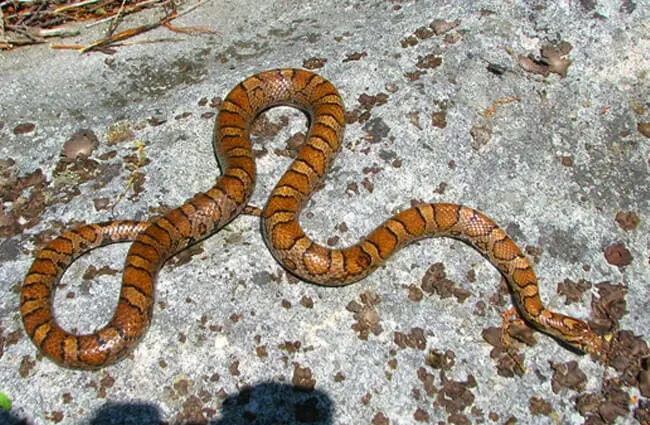
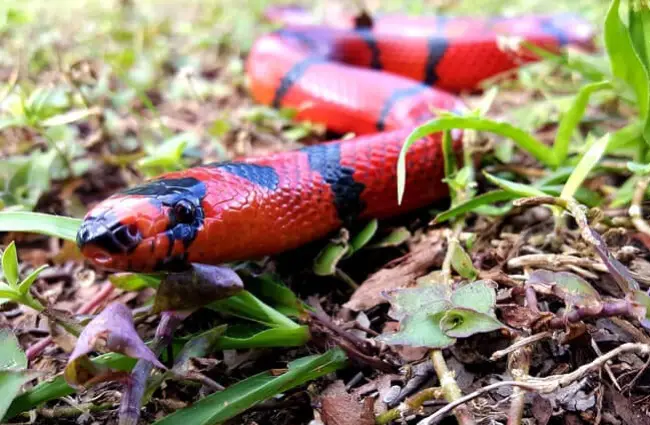


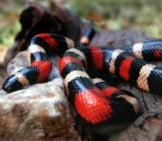

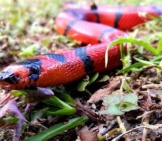
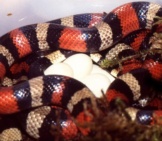
![Red Angus Closeup of a beautiful Red Angus cowPhoto by: U.S. Department of Agriculture [pubic domain]https://creativecommons.org/licenses/by/2.0/](https://animals.net/wp-content/uploads/2020/03/Red-Angus-4-238x178.jpg)












![Red Angus Closeup of a beautiful Red Angus cowPhoto by: U.S. Department of Agriculture [pubic domain]https://creativecommons.org/licenses/by/2.0/](https://animals.net/wp-content/uploads/2020/03/Red-Angus-4-100x75.jpg)

